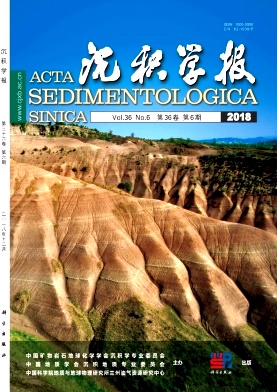The Sedimentary Environment and Deposition Mode of Organic-Rich Mudstone from the Third Member of Hetaoyuan Formation in the Biyang Depression
doi: 10.14027/j.issn.1000-0550.2018.096
- Received Date: 2017-10-17
- Rev Recd Date: 2018-01-02
- Publish Date: 2018-12-10
-
Key words:
- sedimentary environment /
- productivity /
- organics-rich mudstone /
- the third member of Hetaoyuan Formation /
- Biyang depression
Abstract: According to various test methods, including Rock-Eval, GC-MS, ICP-MS, XRF and others, the abundance and type of organic matter, the major/trace elements, and the biomarker characteristics of the mudstone from the second and third beds of the third member of the Hetaoyuan Formation from the Biyang depression of the Nanxiang Basin were investigated. Based on this analysis, the geochemical characteristics and sedimentary environment of the lacustrine organic-rich mudstone have been discussed, and the deposition mode of the organic-rich mudstone has been definitively established. The results show that, during the depositional period of the second bed, the TOC values of the mudstone were relatively lower, and the organic matter of the lacustrine basin consisted of aquatic organisms and terrigenous organic matter. The kerogen types of the second-bed source rocks ranged from I to Ⅲ. The water column caused by high-salinity water and a reducing environment provided excellent preservation conditions for organic matter enrichment. However, high-salinity water conditions tend to lead to reduced primary productivity in lakes. In addition, the relatively higher terrigenous detrital matter input decreased lake productivity and was not conducive to organic matter accumulation. In contrast, during the sedimentary period of the third bed, the TOC values of the mudstone were relatively higher. The kerogen types of third-bed source rocks were mainly I and Ⅱ1. The lacustrine salinity decreased dramatically, and the water column was not obvious, meaning that the anoxic bottom water environment was responsible for organic matter preservation. Under such circumstances, high productivity is the controlling factor for organic matter accumulation in third-bed mudstone.
| Citation: | TAN ZhaoZhao, WANG WeiMing, LI WenHao, LU ShuangFang, HE TaoHua, CHENG ZeHu. The Sedimentary Environment and Deposition Mode of Organic-Rich Mudstone from the Third Member of Hetaoyuan Formation in the Biyang Depression[J]. Acta Sedimentologica Sinica, 2018, 36(6): 1256-1266. doi: 10.14027/j.issn.1000-0550.2018.096 |






 DownLoad:
DownLoad: